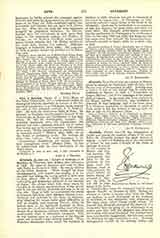

Alvarado, ALONZO DE, a Knight of Santiago, b. at Becadura de Trasmura, near Burgos, date unknown; d. 1559. He came to America, and went to Peru with Pedro de Alvarado in 1534. He was no relative of the latter, however. While charged by some contemporaries with avarice and cruelty, it is undeniable that during the trying period of civil wars in Peru (about 1537 to 1555) Alvarado was an unflinching and determined adherent to the interests of Spain. He always sided with those whom he thought to be sincere representatives of the crown, and it was not always profitable and safe to be on that side. Thus, in 1537, he commanded the troops of Pizarro’s followers, when Almagro claimed Cuzco. Defeated and captured by the latter at Abancay,:after effecting his escape under great difficulties as well as dangers, and rejoining Pizarro, whom he looked upon as the legitimate governor of Peru, he took part in all the bloody troubles that followed, always as a prominent military leader and always unsuccessful when in immediate command. Still, he was counted upon as a mainstay of the Spanish cause, and occupied a high military position. When Francisco Hernandez Giron raised the standard of rebellion in 1553, Alvarado was put in command of the forces to oppose him. At Chuquinga, in 1554. Alvarado suffered a signal defeat at the hands of the insurgents. Overcome by melancholy in consequence of that last disaster, he pined away and died five years later. His principal achievement, however, was the pacification of Chachapoyas in northeastern Peru, in the years 1535 and 1536, this being the first step taken from Peru towards the Amazonian basin. Alvarado married in Spain, while on a short visit, in 1544.
AD. F. BANDELIER

